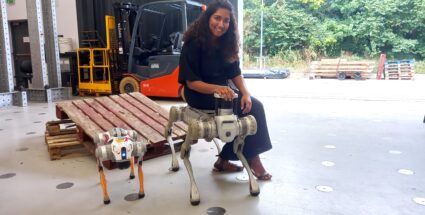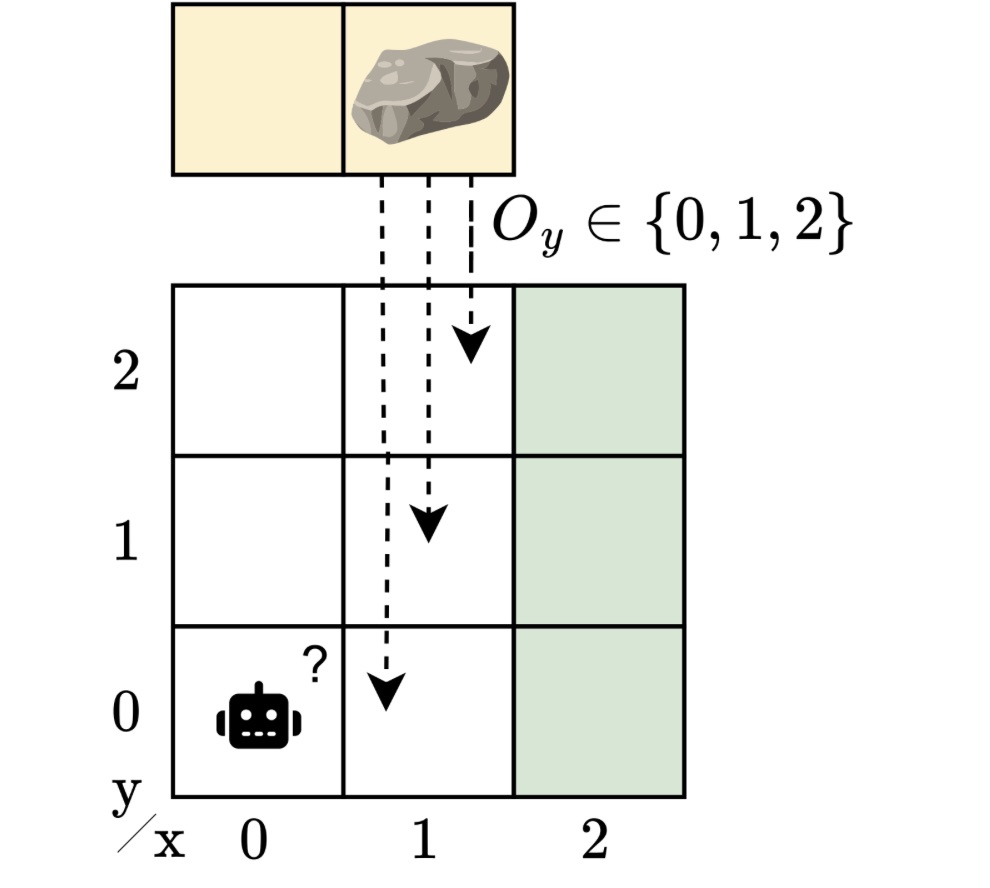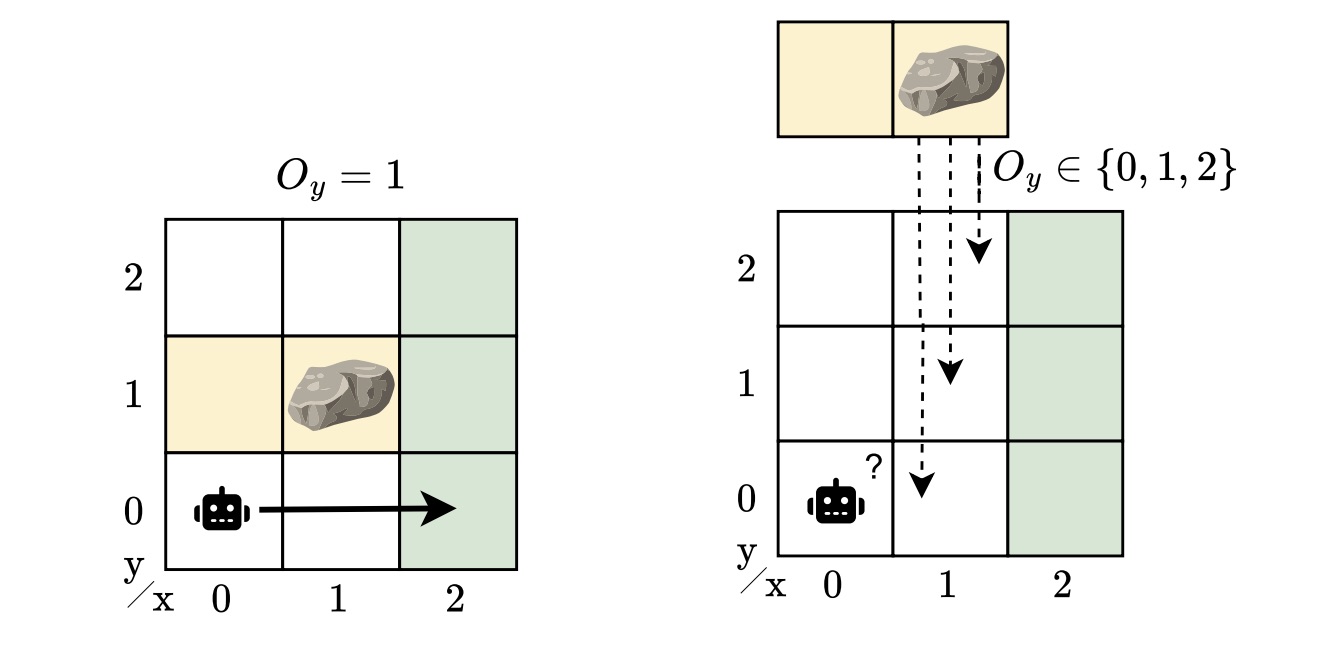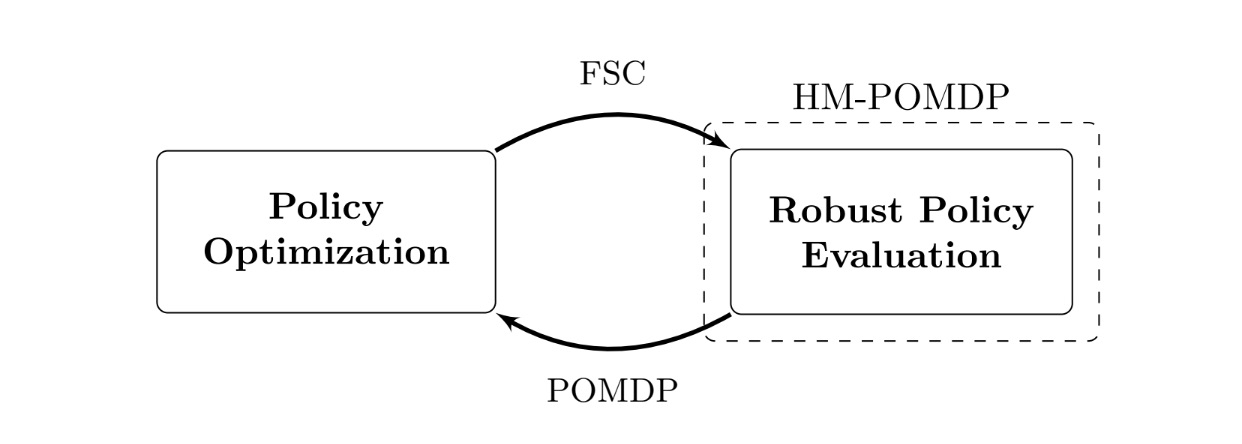Scientists uncover the brain’s hidden learning blocks
Robot Talk Episode 135 – Robot anatomy and design, with Chapa Sirithunge

Claire chatted to Chapa Sirithunge from University of Cambridge about what robots can teach us about human anatomy, and vice versa.
Chapa Sirithunge is a Marie Sklodowska-Curie fellow in robotics at the University of Cambridge. She has an undergraduate degree and PhD in Electrical Engineering from the University of Moratuwa. Before joining the University of Cambridge in 2022, she was a lecturer at Sri Lanka Technological Campus and a visiting lecturer at the University of Moratuwa Sri Lanka. Her research interests span assistive robotics, soft robots and physical human-robot interaction. In addition to her research, she founded Women in Robotics Cambridge to help young minds navigate their path into robotics.
BrainBody-LLM algorithm helps robots mimic human-like planning and movement
China says humanoid robot buzz carries bubble risk
Humanoid robots reliably manipulate different objects with 87% success using new framework
Learning robust controllers that work across many partially observable environments

In intelligent systems, applications range from autonomous robotics to predictive maintenance problems. To control these systems, the essential aspects are captured with a model. When we design controllers for these models, we almost always face the same challenge: uncertainty. We’re rarely able to see the whole picture. Sensors are noisy, models of the system are imperfect; the world never behaves exactly as expected.
Imagine a robot navigating around an obstacle to reach a “goal” location. We abstract this scenario into a grid-like environment. A rock may block the path, but the robot doesn’t know exactly where the rock is. If it did, the problem would be reasonably easy: plan a route around it. But with uncertainty about the obstacle’s position, the robot must learn to operate safely and efficiently no matter where the rock turns out to be.

This simple story captures a much broader challenge: designing controllers that can cope with both partial observability and model uncertainty. In this blog post, I will guide you through our IJCAI 2025 paper, “Robust Finite-Memory Policy Gradients for Hidden-Model POMDPs”, where we explore designing controllers that perform reliably even when the environment may not be precisely known.
When you can’t see everything
When an agent doesn’t fully observe the state, we describe its sequential decision-making problem using a partially observable Markov decision process (POMDP). POMDPs model situations in which an agent must act, based on its policy, without full knowledge of the underlying state of the system. Instead, it receives observations that provide limited information about the underlying state. To handle that ambiguity and make better decisions, the agent needs some form of memory in its policy to remember what it has seen before. We typically represent such memory using finite-state controllers (FSCs). In contrast to neural networks, these are practical and efficient policy representations that encode internal memory states that the agent updates as it acts and observes.
From partial observability to hidden models
Many situations rarely fit a single model of the system. POMDPs capture uncertainty in observations and in the outcomes of actions, but not in the model itself. Despite their generality, POMDPs can’t capture sets of partially observable environments. In reality, there may be many plausible variations, as there are always unknowns — different obstacle positions, slightly different dynamics, or varying sensor noise. A controller for a POMDP does not generalize to perturbations of the model. In our example, the rock’s location is unknown, but we still want a controller that works across all possible locations. This is a more realistic, but also a more challenging scenario.

To capture this model uncertainty, we introduced the hidden-model POMDP (HM-POMDP). Rather than describing a single environment, an HM-POMDP represents a set of possible POMDPs that share the same structure but differ in their dynamics or rewards. An important fact is that a controller for one model is also applicable to the other models in the set.
The true environment in which the agent will ultimately operate is “hidden” in this set. This means the agent must learn a controller that performs well across all possible environments. The challenge is that the agent doesn’t just have to reason about what it can’t see but also about which environment it’s operating in.
A controller for an HM-POMDP must be robust: it should perform well across all possible environments. We measure the robustness of a controller by its robust performance: the worst-case performance over all models, providing a guaranteed lower bound on the agent’s performance in the true model. If a controller performs well even in the worst case, we can be confident it will perform acceptably on any model of the set when deployed.
Towards learning robust controllers
So, how do we design such controllers?
We developed the robust finite-memory policy gradient rfPG algorithm, an iterative approach that alternates between the following two key steps:
- Robust policy evaluation: Find the worst case. Determine the environment in the set where the current controller performs the worst.
- Policy optimization: Improve the controller for the worst case. Adjust the controller’s parameters with gradients from the current worst-case environment to improve robust performance.

Over time, the controller learns robust behavior: what to remember and how to act across the encountered environments. The iterative nature of this approach is rooted in the mathematical framework of “subgradients”. We apply these gradient-based updates, also used in reinforcement learning, to improve the controller’s robust performance. While the details are technical, the intuition is simple: iteratively optimizing the controller for the worst-case models improves its robust performance across all the environments.
Under the hood, rfPG uses formal verification techniques implemented in the tool PAYNT, exploiting structural similarities to represent large sets of models and evaluate controllers across them. Thanks to these developments, our approach scales to HM-POMDPs with many environments. In practice, this means we can reason over more than a hundred thousand models.
What is the impact?
We tested rfPG on HM-POMDPs that simulated environments with uncertainty. For example, navigation problems where obstacles or sensor errors varied between models. In these tests, rfPG produced policies that were not only more robust to these variations but also generalized better to completely unseen environments than several POMDP baselines. In practice, that implies we can render controllers robust to minor variations of the model. Recall our running example, with a robot that navigates a grid-world where the rock’s location is unknown. Excitingly, rfPG solves it near-optimally with only two memory nodes! You can see the controller below.

By integrating model-based reasoning with learning-based methods, we develop algorithms for systems that account for uncertainty rather than ignore it. While the results are promising, they come from simulated domains with discrete spaces; real-world deployment will require handling the continuous nature of various problems. Still, it’s practically relevant for high-level decision-making and trustworthy by design. In the future, we will scale up — for example, by using neural networks — and aim to handle broader classes of variations in the model, such as distributions over the unknowns.
Want to know more?
Thank you for reading! I hope you found it interesting and got a sense of our work. You can find out more about my work on marisgg.github.io and about our research group at ai-fm.org.
This blog post is based on the following IJCAI 2025 paper:
- Maris F. L. Galesloot, Roman Andriushchenko, Milan Češka, Sebastian Junges, and Nils Jansen: “Robust Finite-Memory Policy Gradients for Hidden-Model POMDPs”. In IJCAI 2025, pages 8518–8526.
For more on the techniques we used from the tool PAYNT and, more generally, about using these techniques to compute FSCs, see the paper below:
- Roman Andriushchenko, Milan Češka, Filip Macák, Sebastian Junges, Joost-Pieter Katoen: “An Oracle-Guided Approach to Constrained Policy Synthesis Under Uncertainty”. In JAIR, 2025.
If you’d like to learn more about another way of handling model uncertainty, have a look at our other papers as well. For instance, in our ECAI 2025 paper, we design robust controllers using recurrent neural networks (RNNs):
- Maris F. L. Galesloot, Marnix Suilen, Thiago D. Simão, Steven Carr, Matthijs T. J. Spaan, Ufuk Topcu, and Nils Jansen: “Pessimistic Iterative Planning with RNNs for Robust POMDPs”. In ECAI, 2025.
And in our NeurIPS 2025 paper, we study the evaluation of policies:
- Merlijn Krale, Eline M. Bovy, Maris F. L. Galesloot, Thiago D. Simão, and Nils Jansen: “On Evaluating Policies for Robust POMDPs”. In NeurIPS, 2025.
Interlaced origami structure enables compact storage and high-strength robotic deployment
Magnetic fields power smarter soft robots with built-in intelligence
Humanoid robots to trial guiding crowds at Chinese border crossings
Robots take center stage at Singapore ‘Olympiad’
Moving Construction from Digital Design to Physical Reality
How to measure agent performance: metrics, methods, and ROI
It’s never been faster to build an AI agent — some teams can now do it in weeks. But that speed creates a new problem: performance measurement. Once agents start handling production workloads, how do you prove they’re delivering real business value?
Maybe your agents are fielding customer requests, processing invoices, and routing support tickets wherever they need to go. It may look like your agent workforce is driving ROI, but without the right performance metrics, you’re operating in the dark.
Measuring AI agent productivity isn’t like measuring traditional software. Agents are nondeterministic, collaborative, and dynamic, and their impact shows up in how they drive outcomes, not how often they run.
So, your traditional metrics like uptime and response times? They fall short. They capture system efficiency, but not enterprise impact. They won’t tell you if your agents are moving the needle as you scale — whether that’s helping human team members work faster, make better decisions, or spend more time on innovative, high-value work.
Focusing on outcomes instead of outputs is what turns visibility into trust, which is ultimately the foundation for governance, scalability, and long-term business confidence.
Welcome to the fourth and final post in our Agent Workforce series — a blueprint for agent workforce management and success measurement.
Essential agent performance metrics
Forget the traditional software metrics playbook. Enterprise-ready AI agents need measurements that capture autonomous decision-making and integration with human workflows — defined at deployment to guide every governance and improvement cycle that follows.
- Goal accuracy is your primary performance metric. This measures how often agents achieve their intended outcome, not just complete a task (which could be totally inaccurate). For a customer service agent, response speed isn’t enough — resolution quality is the real measure of success.
Formula: (Successful goal completions / Total goal attempts) × 100
Benchmark at 85%+ for production agents. Anything below 80% signals issues that need immediate attention.
Goal accuracy should be defined before deployment and tracked iteratively across the agent lifecycle to verify that retraining and environmental changes continue to improve (and not degrade) performance.
- Task adherence measures whether agents follow prescribed workflows. Agents can drift from instructions in unexpected ways, especially when edge cases are in the picture.
Workflow compliance rate, unauthorized action frequency, and scope boundary violations should be factored in here, with a 95%+ adherence score being the target. Agents that consistently fall outside of that boundary ultimately create compliance and security risks.
Deviations aren’t just inefficiencies — they’re governance and compliance signals that should trigger investigation before small drifts become systemic risks.
- Hallucination rate measures how often agents generate false or made-up responses. Tracking hallucinations should be integrated into the evaluation datasets used during guardrail testing so that factual reliability is validated continuously, and not reactively.
Formula: (Verified incorrect responses / Total responses requiring factual accuracy) × 100
Keep this below 2% for customer-facing agents to maintain factual reliability and compliance confidence.
- Success rate captures end-to-end task completion, while response consistency measures how reliably agents handle identical requests over time, which is a key driver of trust in enterprise workflows.
These Day 1 metrics establish the foundation for every governance and improvement cycle that follows.
Building guardrails that make governance measurable
Governance is what makes your data credible. Without it, you measure agent effectiveness in a silo, without accounting for operational or reputational risks that can undermine your agent workforce.
Governance controls should be built in from Day 1 as part of deployment readiness — not added later as post-production cleanup. When embedded into performance measurement, these controls do more than prevent mistakes; they reduce downtime and accelerate decision-making because every agent operates within tested, approved parameters.
Strong guardrails turn compliance into a source of consistency and trust that give executives confidence that productivity gains from using AI agents are real, repeatable, and secure at scale.
Here’s what strong governance looks like in practice:
- Monitor PII detection and handling continuously. Track exposure incidents, rule adherence, and response times for fixes. PII detection should enable automatic flagging and containment before issues escalate. Any mishandling should trigger immediate investigation and temporary isolation of the affected agent for review.
- Compliance testing should evolve with every model update. Requirements differ by industry, but the approach is consistent: create evaluation datasets that replay real interactions with known compliance challenges, refreshed regularly as models change.
For financial services, test fair lending practices. For healthcare, HIPAA compliance. For retail, consumer protection standards. Compliance measurement should be just as automated and continuous as your performance tracking.
- Red-teaming is an ongoing discipline. Regularly try to manipulate agents into unwanted behaviors and measure their resistance (or lack thereof). Track successful manipulation attempts, recovery methods, and detection times/durations to establish a baseline for improvement.
- Evaluation datasets use recorded, real interactions to replay edge cases in a controlled environment. They create a continuous safety net, allowing you to identify and address risks systematically before they appear in production, not after customers notice.
Evaluation methods: How to evaluate agent accuracy and ROI
Traditional monitoring captures activity, not value, and that gap can hide risks. It’s not enough to just know agents appear to be working as intended; you need quantitative and qualitative data to prove they deliver tangible business outcomes — and to feed those insights back into continuous improvement.
Evaluation datasets are the backbone of this system. They create the controlled environment needed to measure accuracy, detect drift, validate guardrails, and continuously retrain agents with real interaction patterns.
Quantitative assessments
- Productivity metrics must balance speed and accuracy. Raw throughput is misleading if agents sacrifice quality for volume or create downstream rework for human teams.
Formula: (Accurate completions × Complexity weight) / Time invested
This approach prevents agents from gaming metrics by prioritizing easy tasks over complex ones and aligns quality expectations with goal accuracy benchmarks set from Day 1.
- 30/60/90-day trend analysis reveals whether agents are learning and improving or regressing over time.
Track goal accuracy trends, error-pattern evolution, and efficiency improvements across continuous improvement dashboards, making lifecycle progression visible and actionable. Agents that plateau or decline likely need retraining or architectural adjustments.
- Token-based cost tracking provides full visibility into the computational expense of every agent interaction, tying it directly to business value generated.
Formula: Total token costs / Successful goal completions = Cost per successful outcome
This lets enterprises quantify agent efficiency against human equivalents, connecting technical performance to ROI. Benchmark against the fully loaded cost of a human performing the same work, including salary, benefits, training, and management overhead. It’s “cost as performance” in practice, a direct measure of operational ROI.
Qualitative assessments
- Compliance audits catch what numbers miss. Human-led sampling exposes subtle issues that automated scoring overlooks. Run audits weekly, not quarterly as AI systems drift faster than traditional software, and early detection prevents small problems from undermining trust or compliance.
- Structured coaching adds human judgment where quantitative metrics reach their limit. By reviewing failed or inconsistent interactions, teams can spot hidden gaps in training data and prompt design that automation alone can’t catch. Because agents can incorporate feedback instantly, this becomes a continuous improvement loop — accelerating learning and keeping performance aligned with business goals.
Building a monitoring and feedback framework
A unified monitoring and feedback framework ties all agent activity to measurable value and continuous improvement. It surfaces what’s working and what needs immediate action, much like a performance review system for digital employees.
To make sure your monitoring and feedback framework positions human teams to get the most from digital employees, incorporate:
- Anomaly detection for early warning: Essential for managing multiple agents across different use cases. What looks like normal in one context might signal major issues in another.
Use statistical process control methods that account for the expected variability in agent performance and set alert thresholds based on business impact, not just statistical deviations.
- Real-time dashboards for unified visibility: Dashboards should surface any anomalies instantly and present both human and AI performance data in a single, unified view. Because agent behavior can shift rapidly with model updates, data drift, or environmental changes, include metrics like accuracy, cost burn rates, compliance alerts, and user satisfaction trends. Ensure insights are intuitive enough for executives and engineers alike to interpret within seconds.
- Automated reporting that speaks to what’s important: Reports should translate technical metrics into business language, connecting agent behavior to outcomes and ROI.
Highlight business results, cost efficiency trends, compliance posture and actionable recommendations to make the business impact unmistakable.
- Continuous improvement as a growth loop: Feed the best agent responses back into evaluation datasets to retrain and upskill agents. This creates a self-reinforcing system where strong performance becomes the baseline for future measurement, ensuring progress compounds over time.
- Combined monitoring between human and AI agents: Hybrid teams perform best when both human and digital workers are measured by complementary standards. A shared monitoring system reinforces accountability and trust at scale.
How to improve agent performance and AI outcomes
Improvement isn’t episodic. The same metrics that track performance should guide every upskilling cycle, ensuring agents learn continuously and apply new capabilities immediately across all interactions.
Quick 30–60-day cycles can deliver measurable results while maintaining momentum. Longer improvement cycles risk losing focus and compounding inefficiencies.
Implement targeted training and upskilling
Agents improve fastest when they learn from their best performances, not just their failures.
Using successful interactions to create positive reinforcement loops helps models internalize effective behaviors before addressing errors.
A skill-gap analysis identifies where additional training is needed, using the evaluation datasets and performance dashboards established earlier in the lifecycle. This keeps retraining decisions driven by data, rather than instinct.
To refine training with precision, teams should:
- Review failed interactions systematically to uncover recurring patterns such as specific error types or edge cases, and target those for retraining.
- Track how error patterns evolve across model updates or new data sources. This shows whether retraining is strengthening performance or introducing new failure modes.
- Focus on concrete underperformance scenarios, and patch any vulnerabilities identified through red-teaming or audits before they impact outcomes.
Use knowledge bases and automation for support
Reliable information is the foundation of high-performing agents.
Repository management ensures agents have access to accurate, up-to-date data, preventing outdated content from degrading performance. Knowledge bases also enable AI-powered coaching that provides real-time guidance aligned with KPIs, while automation reduces errors and frees both humans and agents to focus on higher-value work.
Real-time feedback and performance reviews
Live alerts and real-time monitoring stop problems before they escalate.
Immediate feedback enables instant correction, preventing small deviations from becoming systemic issues. Performance reviews should zero in on targeted, measurable improvements. Since agents can apply updates instantly, frequent human-led and AI-powered reviews strengthen performance and trust across the agent workforce.
This continuous feedback loop reinforces governance and accountability, keeping every improvement aligned with measurable, compliant outcomes.
Governance and ethics: Build trust into measurement
Governance isn’t just about measurement; it’s how you sustain trust and accountability over time. Without it, fast-moving agents can turn operational gains into compliance risk. The only sustainable approach is embedding governance and ethics directly into how you build, operate, and govern agents from Day 1.
Compliance as code embeds regulation into daily operations rather than treating it as a separate checkpoint. Integration should begin at deployment so compliance is continuous by design, not retrofitted later as a reactive adjustment.
Data privacy protection should be measured alongside accuracy and efficiency to keep sensitive data from being exposed or misused. Privacy performance belongs within the same dashboards that track quality, cost, and output across every agent.
Fairness audits extend governance to equity and trust. They verify that agents treat all customer segments consistently and appropriately, preventing bias that can create both compliance exposure and customer dissatisfaction.
Immutable audit trails provide the documentation that turns compliance into confidence. Every agent interaction should be traceable and reviewable. That transparency is what regulators, boards, and customers expect to validate accountability.
When governance is codified rather than bolted on, it’s an advantage, not a constraint. In highly regulated industries, the ability to prove compliance and performance enables faster, safer scaling than competitors who treat governance as an afterthought.
Turning AI insights into business ROI
Once governance and monitoring are in place, the next step is turning insight into impact. The enterprises leading the way in agentic AI are using real-time data to guide decisions before problems surface. Advanced analytics move measurement from reactive reporting to AI-driven recommendations and actions that directly influence business outcomes.
When measurement becomes intelligence, leaders can forecast staffing needs, rebalance workloads across human and AI agents, and dynamically route tasks to the most capable resource in real time.
The result: lower cost per action, faster resolution, and tighter alignment between agent performance and business priorities.
Here are some other tangible examples of measurable ROI:
- 40% faster resolution rates through better agent-customer matching
- 25% higher satisfaction rates through consistent performance and reduced wait times
- 50% reduction in escalation rates and call volume through improved first-contact resolution
- 30% lower operational costs through optimized human-AI collaboration
Ultimately, your metrics should tie directly to financial outcomes, such as bottom line impact, cost savings, and risk reduction traceable to specific improvements. Systematic measurement is what transforms pilot projects into scalable, enterprise-wide agent deployments.
Agentic measurement is your competitive edge
Performance measurement is the operating system for scaling a digital workforce. It gives executives visibility, accountability, and proof — transforming experimental tools into enterprise assets that can be governed, improved, and trusted. Without it, you’re managing an invisible workforce with no clear performance baseline, no improvement loop, and no way to validate ROI.
Enterprises leading in agentic AI:
- Measure both autonomous decisions and collaborative performance.
- Use guardrails that turn monitoring into continuous risk management.
- Track costs and efficiency as rigorously as revenue.
- Build improvement loops that compound gains over time.
This discipline separates those who scale confidently from those who stall under complexity and compliance pressure.
Standardizing how agent performance is measured keeps innovation sustainable. The longer organizations delay, the harder it becomes to maintain trust, consistency, and provable business value at scale. Learn how the Agent Workforce Platform unifies measurement, orchestration, and governance across the enterprise.
The post How to measure agent performance: metrics, methods, and ROI appeared first on DataRobot.